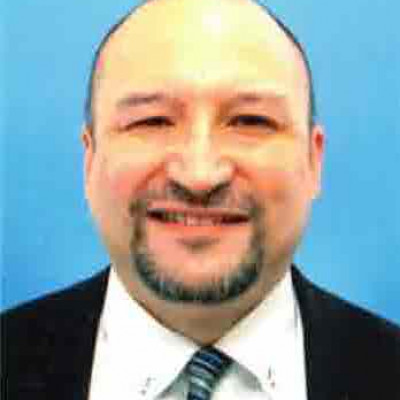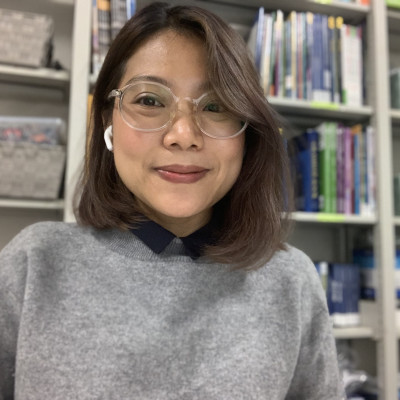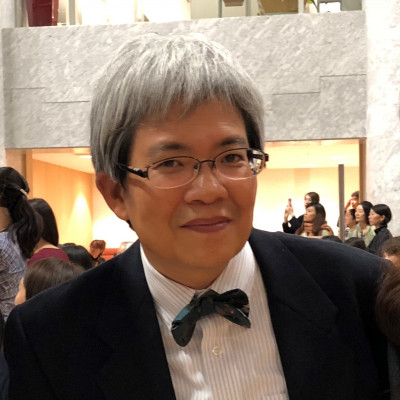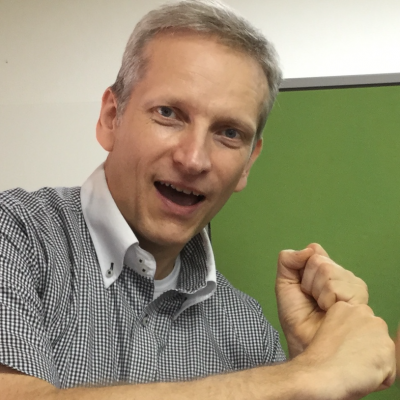Sessions / Zoom 4


A Duo-ethnographic Analysis of Public Speaking #1303
Duo-ethnography is a research methodology that can be effectively used for reflective practice as it involves two or more researchers juxtaposing their lived experiences and life histories to analyze and understand a phenomenon (Norris & Sawyer, 2016). In this presentation, two English language instructors teaching at a private university in Japan analyze the use of public speaking in English language learning. According to Girard, Pinrar, and Trapp (2011), public speaking can assist ESL classrooms by increasing students’ learning motivation and prompting participation and interaction. The presentation begins with an overview of the existing literature on public speaking in the English classroom. This is followed by an introduction to duo-ethnography and an outline of the methodology used for this research. The results and findings have been categorized into three areas: the role of public speaking in the language learning journey of the researchers, the impact of their past experiences on their current teaching beliefs regarding public speaking, and classroom practices that reflect how the researchers actually focus on developing the public speaking skills of their students.

Anyone Can Write a Shinhaiku #1339
This presentation will address the place of second language creative writing (SLCW) in EFL curricula by first providing an updated understanding of SLCW and the Japanese form shinhaiku—a nontraditional haiku. Shinhaiku differs from traditional haiku in that it does not utilize the 5-7-5 syllable form. Secondly, I will consider misconceptions as well as pedagogical implications of SLCW and thirdly, offer a classroom approach to SLCW (poetry writing). This is taken from my action research and teaching practices, underpinned by Spiro’s (2014) reading-to-writing cycle where learners 1) choose SLCW poems which they admire from an EFL literary journal; 2) articulate reasons for appreciation of said poems; 3) apply these ideas to their SLCW; and 4) reflect on the process. I will provide a demonstration of this teaching practice, which can cater from elementary school to advanced learners, and present results in the form of examples from student work as well as present a case for why shinhaiku is an accessible form in the Japanese context.

Graphic Novels for EFL #1350
Shaun Tan's graphic novel, "The Arrival”, contains no words. Due to its visual nature, it is accessible, and it also engages readers' critical thinking skills due to its themes about immigrant and refugee experience. Van Amelsvoort explores the many ways in which images not only help learners to memorise new content, but that they are often more effective than text in this aim (2013). Furthermore, visuals can engage students’ top-down processing far more rapidly than the written word, in that our schematic knowledge can often recognise the meaning behind images even when we do not know the foreign definition for them, thereby easing the burden of comprehension and performance that many learners face with new content (Hadley, 2001).
An advantage of using this graphic novel was the immediacy students felt relating to text and topic. The contents were used on a week-by-week basis—one part of the story revealed after the other—to teach a semester-long first-year seminar course. Students undertook a number of tasks and group work, including analysis, storytelling, prediction, tense exploration, role play, and performance to deepen their understanding of the text and global issues, all the while improving communicative competence through language use. This short presentation will outline some of the steps taken to successfully teach a graphic novel in an EMI or elective EFL class, and some of the disadvantages. Attendees will learn of some ways that they can implement and incorporate similar texts into their own classroom experiences.

Using a film adaptation of a literary work online #1367
It has long been argued that literature plays an important role in the EFL classroom (e.g., Paran, 2006). On the other hand, combining learning a foreign language with the use of media and technology is a common practice nowadays (Heafner, 2004). This presentation aims to explore the potential of a film adaptation of a literary work in the EFL classroom at a Japanese university. It first shows how the film, "The Remains of the Day", adapted from Kazuo Ishiguro’s novel of the same title, was used as the main material in the online course. After students’ answers to the open-ended questions on interpretations of some specific scenes in the film are introduced, their responses to the film and the activities are analysed based on questionnaire data. The results show that a film adaptation has the potential to motivate and engage students and to deepen their cultural and historical understanding of societies in which the target language is spoken. Furthermore, it is suggested that the use of this type of material in the synchronous classroom provides some advantages for students compared with practices in a regular face-to-face class.






LiLT Forum #1241
In any classroom, including a language teaching setting, teaching literature is not just a means to increased vocabulary or grammatical constructs. Literary texts can be fairly linear with simple plots or richly ambiguous with a myriad of interpretations that require the reader to sift through the fine nuances of language. Some texts provoke the reader to ask, and more importantly attempt to answer, questions; perhaps questions the reader had never pondered. What criteria beyond language learning drives your choice of text? Perhaps there are cultural aspects that the text captures, or provocative story lines that challenge our beliefs. What deeper issues do you hope to raise with your students?
In this LiLT forum, we would like to address this topic. Presenters will explain their criteria for text selection as well as other relevant issues. Integral to the forum's success is audience participation; questions and insights will be solicited and greatly appreciated. Non-members and LiLT members alike are encouraged to attend and enrich our friendly and inclusive forum.

Dramatizing the Data: A Creative Way to Match Form and Content When Reporting Qualitative Research Results at an Academic Conference #1295
What does the puzzling phrase “dramatizing the data” in the title mean? Is it literal? Metaphor? Or both? The simplest answer is that it mirrors the title of a book edited by Bagley and Cancienne (2002) which will be described and discussed first in this presentation. And how does one match “form with content”? The definition of the components of the phrase as used in art and art criticism follows: “The term form refers to the work's composition, techniques and media used, and how the elements of design are implemented. It mainly focuses on the physical aspects of the artwork, such as medium, color, value, space, etc., rather than on what it communicates. Content, on the other hand, refers to a work's subject matter, i.e., its meaning.” Why does one attempt to accomplish this matching? What does this matching mean in terms of Performance in Education (PIE)? This discussion is the presentation’s second part. The third part is a short interactive performance by the presenter and attendees. Finally, there will be a Q&A/Comment time.
Bagley, C. & Cancienne, M. (Eds.). (2002). Dancing the Data. Elijah Mirochnik (Gen. Ed.). Lesley University Series in Arts and Education (vol. 5). New York: Peter Lang.

Peer feedback for group activity assessment #1294
Oral communication is a fundamental aspect of most language programs and this usually involves group activities where students interact with each other in the target language. Still, teachers can’t be everywhere at once to evaluate and ensure that all goals for a group activity have been properly attended to by every student. Several criteria should be met, such as (1) Did the student prepare adequately? (2) Was their response to the discussion prompt level-appropriate? (3) Did they use the target language to the best of their abilities? (4) Did they interact with other group members appropriately?
In the absence of methodical procedures and guidelines to communicate this to students, their subsequent assessment for such efforts can appear whimsical or even arbitrary and de-motivating.
This presentation will discuss vetted-peer feedback rubrics and their use via cloud-computing to timely and effectively deliver peer and teacher feedback to students about their performance in group activity situations.
The outcome for participants of this presentation should be (a) better awareness of how to articulate and implement peer feedback during group activities, and (b) how to make use of free cloud computing applications such as forms and spreadsheets to quickly compile and disseminate such feedback.

Plurilingualism in Japan: What are we talking about? #1297
“Concepts travel, and it is better to know that they travel” (Morin, 1990). This presentation seeks to clarify the present dialogue on the concept of plurilingualism, a keyword of this PanSIG conference. Within the discourse of resistance to neoliberal trends in applied linguistics and language education (Kubota, 2014), plurilingualism has also been labelled as a European ideology complicit with neoliberalism (Flores, 2013; Garcia & Otheguy, 2020). Plurilingual education, however, is practiced in contexts around the globe, including Japan. In each new context, the travelling concept takes on new meanings. Through examination of the aforementioned critique, and the Japanese translation of plurilingualism, which contains the potentially unfortunate suffix (-主義), suggestive of ideologies, this presentation aims to delineate the term plurilingualism, which has come to refer to multilingual phenomena, individual competence, and ideology (Coste et al., 2009), but also a theoretical lens (Marshall & Moore, 2018) and a pedagogical stance (Moore et al, 2020). In the Japanese context specifically, interpretations of plurilingualism (e.g., Oyama, 2016) will be examined, before using examples of plurilingual education in Japanese school practice to discuss how plurilingual approaches can help learners and teachers develop their competencies through critical and reflexive engagement with languages.



Performance in Education (PIE) SIG Forum #1223
The Performance in Education (PIE) SIG Forum will be of short presentation/Pecha-Kucha format on the various facets of Performance in Education. The presenters will cover topics surrounding the planning of Performance Assisted Learning (PAL) activities such as the procedure in planning, examples of successful planning, challenges, classroom executions, tips for beginners, and their reflections and thoughts on planning and executions. The forum will feature PIE practitioners who specialize in various genres of PIE activities such as roleplay, improvisation, public speaking, discussion, process drama, readers theatre, music, and many more.





GILE SIG Forum #1227
Based on your experiences, what can we global educators do to support/welcome you better into the field and what can we do pedagogically to 'normalize' your presence in classrooms to our students?" This is a 90 min. forum of three multicultural, global educators sharing their experiences in the field and then ask for their thoughts on how global educators can meaningfully promote multi/plurilingualism and diversity. It will highlight their experiences in the field as well as in the classroom and use those to inform a discussion on suggestions for both supporting academics and classroom practice that can normalize their presence in ELT.

Is Drama in the Classroom Always a Good Idea? #1287
Drama in the classroom can be a powerful tool for EFL teachers. Its potential benefits include motivation, engagement, fluency, presentation skills, social skills, empathy, and self-confidence. However, because it takes place in a less structured learning environment where the teacher has less overt control over the students, and because some people may see it as non-educational, some may question if drama activities are appropriate in all EFL contexts. Success in most cases will require some degree of teacher training, thoughtful preparation, clear expectations, support from students and administration, and flexible lesson plans. The most consequential decision will center on if the teacher will use drama activities occasionally within existing classes or set up a dedicated drama class. To help secondary and post-secondary teachers decide if drama is suitable for them and their particular context, the presenter will discuss his own experience with drama as a language student and as a teacher responsible for organizing school plays and teaching a drama class. The presenter will also give practical advice on appropriate content, show a sample lesson plan, and demonstrate a drama activity with the participants. The presenter will also give examples of drama activities that can be done online.

Inclusive and Equitable Quality Education, and Active Learning #1357
The sustainable development goals (SDGs) of the UNDP of interest to educators aim to “ensure inclusive and equitable quality education and promote life-long education opportunities for all” with “equal access for all women”. Development programs that focus on women’s participation in education describe the development of active learning. Building intrinsically motivated participation in society is seen as both the critical path towards a goal of sustainable development and the goal itself. A desired outcome, mirrored in an education path of highly participatory, active learning, would seem to make sense. It is worth looking to see if there are indicators that support the assumption. This article presents a survey of University English language students taking part in active learning classes in EAP (English for Academic Purposes, Dept. of Int’l English). Through a focus on gender issues, the appreciation students have for participatory classes was discovered. The survey confirmed active learning inclusivity and gave a corpus of feedback describing a shared preference for group-work classes that cited the value of building skills of critical reasoning, self-expression and comparing opinions, or, as one student expressed it, “not just input but output” in class, over and above exclusively listening to a teacher.

Teaching about Esperanto for Linguistic Awareness #1296
English language educators often emphasize the role of English as a global language to their learners. However, most EFL students know little or nothing about another global language – Esperanto. Esperanto is a unique artificial language created to promote cross-cultural communication, international understanding, global citizenship and world peace. It was invented in the year 1887 by Ludwig Zamenhof as a simplified, neutral language designed to foster communication between people of different backgrounds. At present, there are National Esperanto Associations in 70 countries and up to 2 million Esperanto speakers worldwide. This session will argue that teaching EFL students about Esperanto, its history and ideals can promote linguistic awareness, foster critical thinking about language and inspire students with the potential that languages have for promoting peace. The presenter will introduce activities from a college EFL teaching unit he designed that has students learn about the origins of Esperanto, study Zamenhof’s humanitarian ideals, learn about the global community of Esperanto speakers, try out the Esperanto language and discuss issues of language, peace, power and equality. Participants will be provided with a rich variety of handouts, bibliographies and resources for teaching about Esperanto.